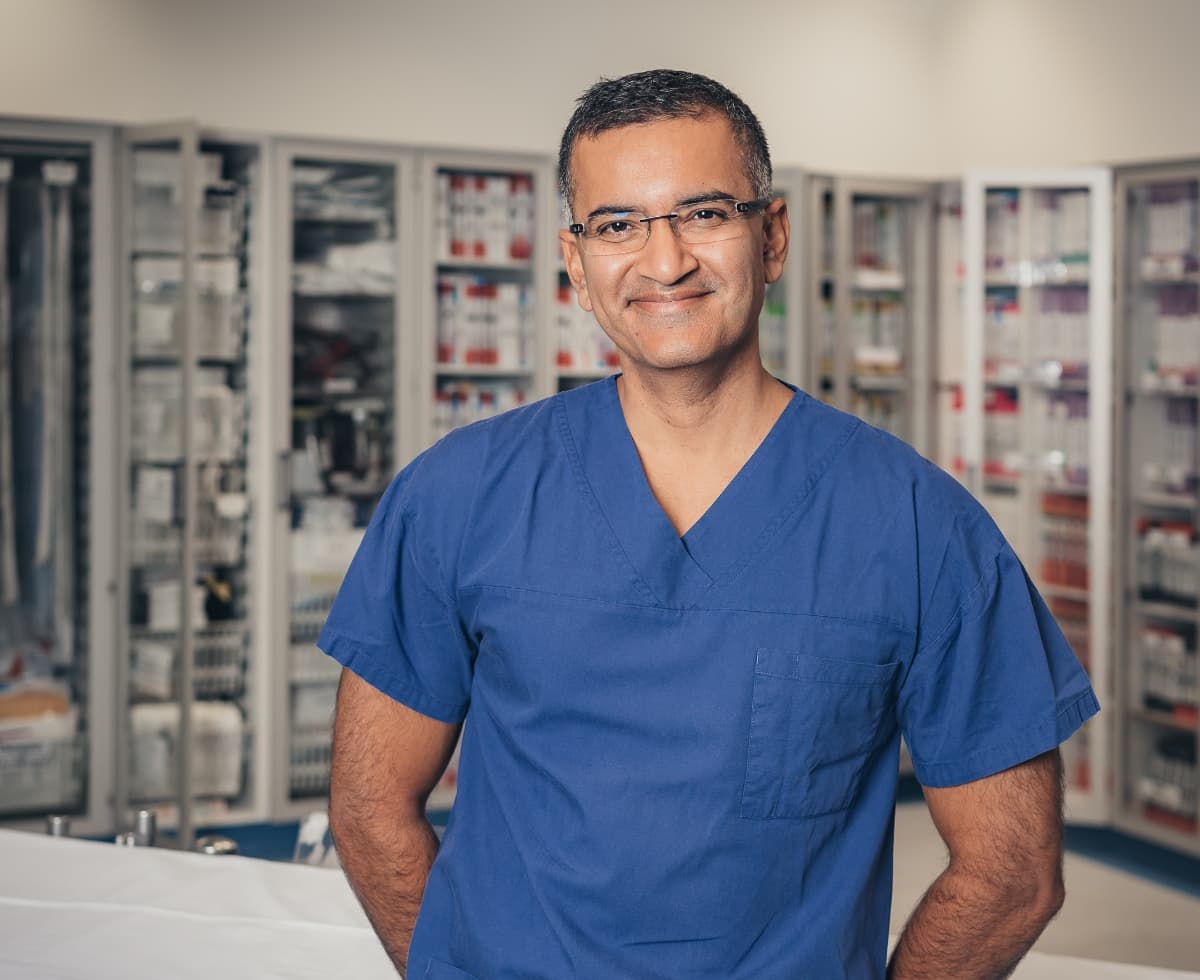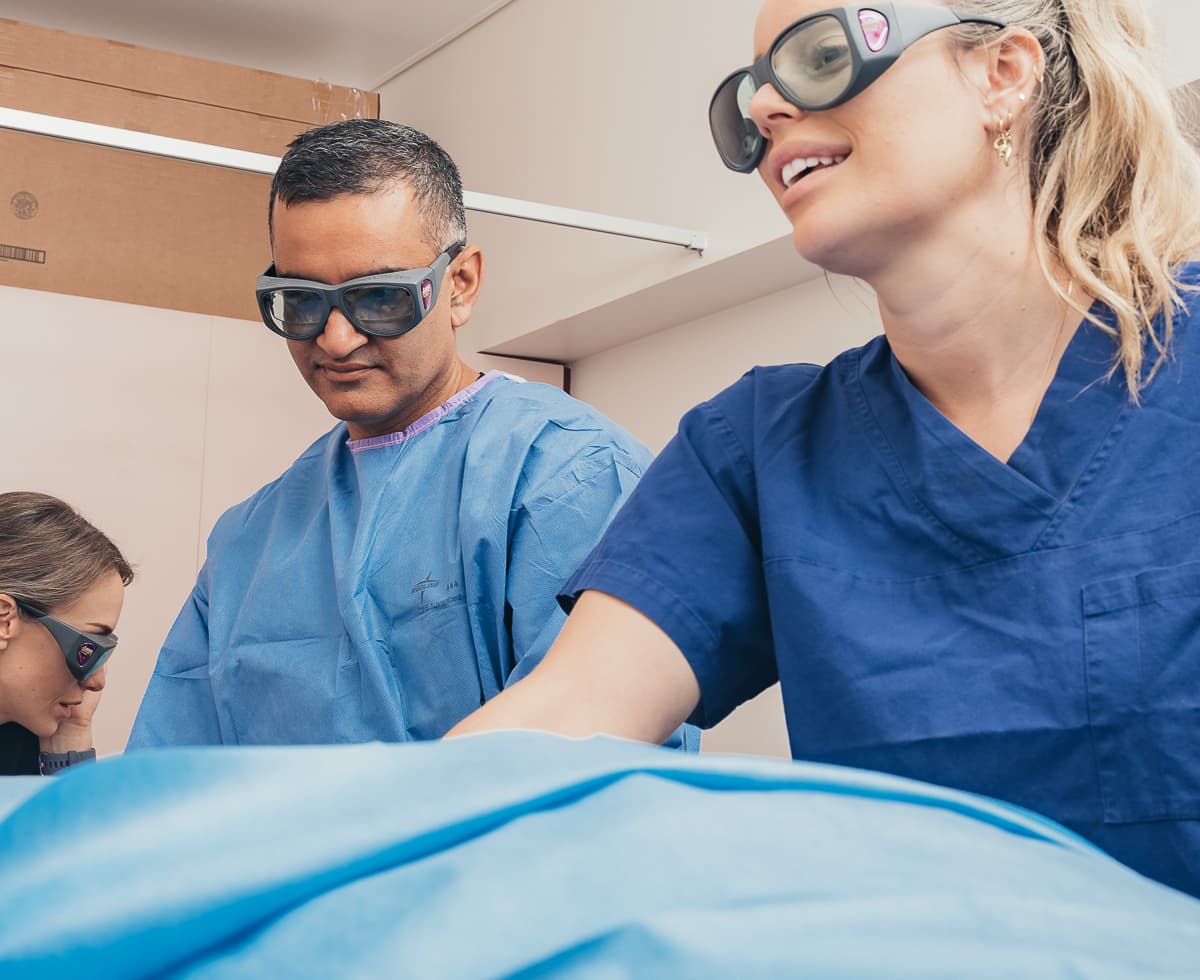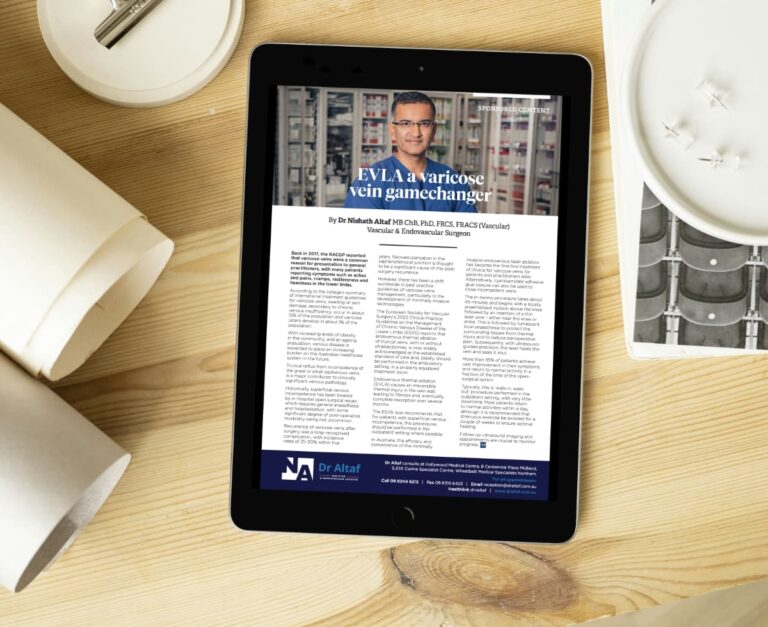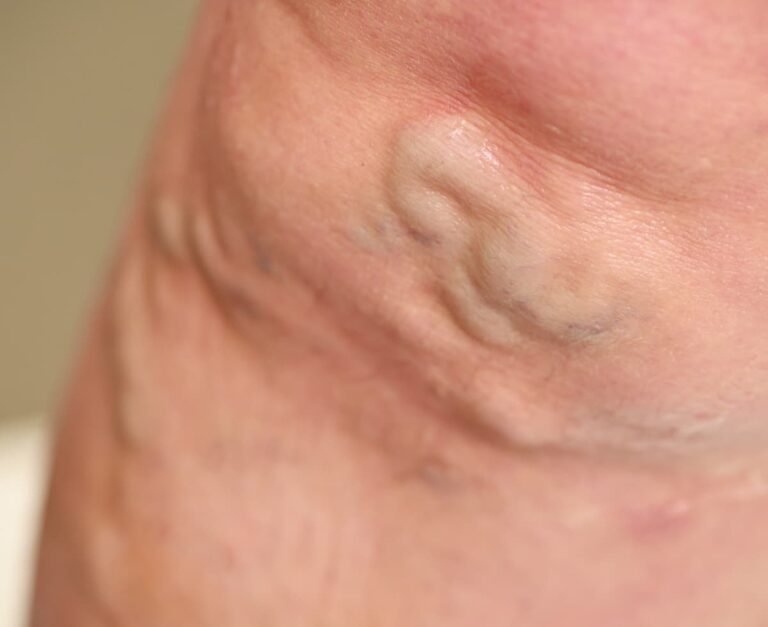Carotid artery disease treatment Perth
Carotid artery disease: All your questions answered

Carotid artery disease, or CAD, can cause stroke or mini-stroke. It’s important to see your doctor if you have symptoms and if there is blockage of the carotid arteries, surgery is usually indicated.

How do I know if I have carotid artery disease?
The carotid arteries are major blood vessels in the neck that carry blood and oxygen to the brain. When fatty and cholesterol deposits build within the wall of the carotid arteries; and they become narrowed; carotid artery stenosis may occur. Many people don’t have symptoms at all and have this condition without knowing it.
When plaque or clot from the diseased artery travels up to the brain and causes part of the brain to be deprived of blood and oxygen, a stroke or a mini-stroke (TIA) can occur.

Vascular Surgeon Perth
Adjunct Clinical Associate Professor at Curtin University
A mini-stroke, also called a transient ischemic attack or TIA is a temporary blockage in the blood flow to the brain and the symptoms disappear entirely within 24 hours. But when you have a stroke, the symptoms persist.
It is critical to visit your doctor when you are or have experienced these symptoms:
- Drooping of one side of the face
- Weakness of one side of the body
- Numbness of one side of the body
- Slurred speech
- Losing vision in one eye – like a curtain coming down over your eye
Carotid artery disease can be treated, but let’s first explain how it is diagnosed.
How is CAD diagnosed?
Typically, carotid artery disease or CAD is diagnosed after your doctor has medically assessed you for the above-mentioned symptoms. A variety of tests may also be required. These may include:
- An ultrasound – that uses sound waves to look at the blood flow within the blood vessels of your neck
- A CT or MR brain scan to look for any damage to your brain
- A CT or MR angiography to look at your blood vessels.
Usually, after an ultrasound of the carotid artery, most people usually undergo a CT or MR angiography to confirm the diagnosis if surgical treatment is considered.
What is the best way to reduce the risk of stroke?
You can help prevent stroke by making lifestyle changes and controlling any health conditions you may have.
- Stop smoking
- Increase exercise
- Have a healthy diet and lose any excess weight
- Managing your blood pressure and cholesterol with medications can also reduce your risk of stroke.
There are many causes of a stroke. Even if the blockage is removed, there is a small risk of stroke – particularly from other causes that may be still present.

What treatments are available for carotid artery disease?
When you come and see me, I will explain to you that the treatment options depend on a range of factors. They include
- Severity of your symptoms,
- Where exactly the disease is located,
- The extent of the disease.
I will take a full medical history and map out all the co-morbidities. Then I will recommend the best treatment option for your case.

Vascular and endovascular surgeon Perth
The treatment options include:
Medical management
Generally, if you have not experienced any symptoms of carotid artery disease, then medical therapy -rather than surgery – is recommended. However, in some situations, even with no symptoms, surgery may be recommended.
Surgery
If you have experienced symptoms of stroke or TIA, and there is blockage of the carotid artery, then surgery is usually indicated. There is a risk of another stroke after the initial one if surgery is not performed early enough.
That’s why most international vascular and stroke societies recommend surgery soon after the initial diagnosis. It’s recommended to operate within 2 weeks after the initial symptom.

Vascular and endovascular surgeon Perth
Carotid endarterectomy
Carotid endarterectomy is an open surgical operation to remove the plaque from the carotid artery. It can be performed under a local or general anaesthetic and involves using an 8-12 cm incision along the side of your neck.
After clearing the carotid artery, the artery is closed using a patch to keep the artery open.
Postoperatively, you will be in ICU and usually in hospital for 48 hours.
Carotid stenting
This is a minimally invasive procedure that allows the insertion of a stent across the blockage in the carotid artery. This is usually delivered through a small incision in the groin under local anaesthetic.
Typically, you would stay in ICU for one day and in hospital for between 2 to 3 days.
I will discuss which option is best for you as there are many factors that determine what is the most suitable procedure in your specific situation.

About
Dr Altaf
As a vascular surgeon, I believe there is no one size fits all. This means appointments take as long until you fully understand the condition and are happy with my approach to get you the best treatment option.


